Each frame shows the dark matter in red, the disk stars in blue, and the bulge stars in yellow. The nominal time-span between frames is 250 million years, or roughly one galactic rotation period.
The main result of this and similar calculations is that disk galaxies
can sometimes accrete smaller (1/3-mass) companions without being totally
disrupted, in contrast to the outcome of equal-mass mergers. Here the large
disk survives because it does not couple strongly to a retrograde perturber.
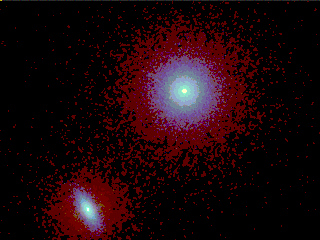
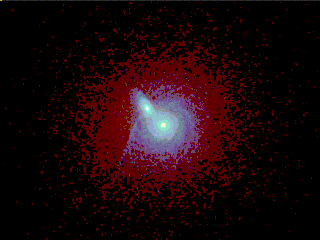
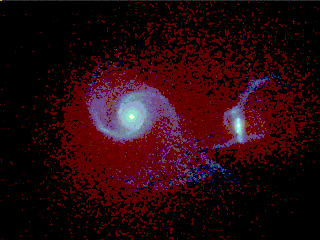
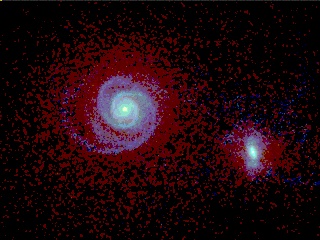
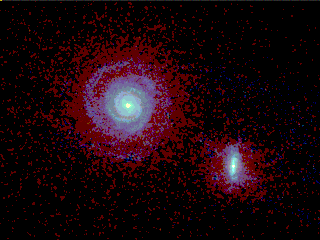
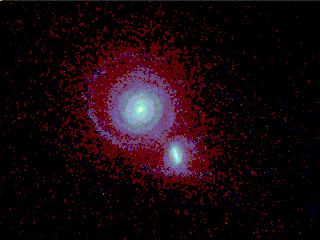
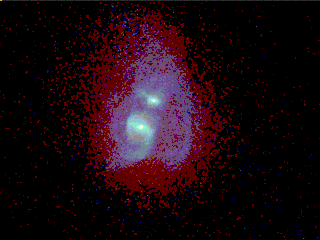
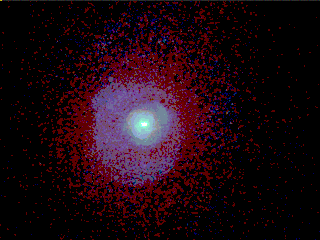
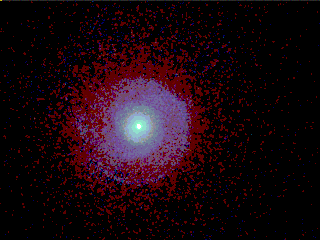
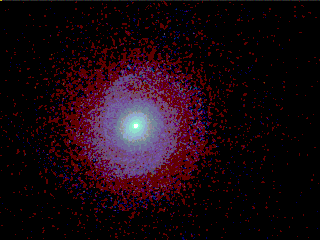
Computer simulation performed at the Maui High-Performance Computing
Center (MHPCC).
Last modified: September 28, 1995